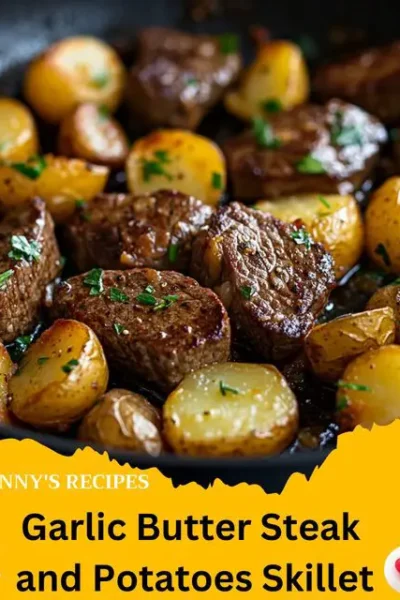Garlic Herb Roasted Potatoes – Carrots and Zucchini Recipe

Roasted vegetables are a simple yet delicious way to enjoy fresh produce. This Garlic Herb Roasted Potatoes, Carrots, and Zucchini recipe is packed with flavor, thanks to the combination of fresh herbs, garlic, and olive oil. The vegetables roast to perfection, resulting in a tender inside and crispy outside. This versatile side dish pairs well with almost any meal, from grilled chicken to roasted fish, or can even be enjoyed on its own for a light vegetarian option.
These roasted vegetables are not only flavorful but also nutrient-dense, making them an excellent choice for a balanced and healthy diet. Whether you’re serving them for a family dinner or meal prepping for the week, this recipe is easy to make and guaranteed to please.

Why Roasting Brings Out the Best in Vegetables
Roasting vegetables is one of the best methods to enhance their natural sweetness and flavor. The high heat caramelizes the natural sugars in the vegetables, creating crispy edges and a tender interior. By adding garlic and herbs, this recipe elevates the simple vegetables into a dish full of complexity and depth.
The combination of potatoes, carrots, and zucchini is perfect for roasting because they each have different textures that complement each other. Potatoes become crispy, carrots develop a sweet and tender bite, and zucchini remains soft without becoming mushy.
Key Ingredients and Their Benefits
Potatoes
Potatoes are a hearty, starchy vegetable that crisps up beautifully when roasted. For this recipe, red potatoes or Yukon gold potatoes work best due to their buttery flavor and creamy texture. These types of potatoes also hold their shape well during roasting.
- Nutritional Tip: Potatoes are an excellent source of vitamin C, potassium, and fiber. Leaving the skins on adds extra nutrients and a satisfying texture to the dish.
Carrots
Carrots add a natural sweetness to the dish that balances out the savory flavors from the garlic and herbs. Roasting brings out their sweetness, making them tender and delicious.
- Health Benefits: Carrots are high in beta-carotene, which is converted into vitamin A in the body. They also provide fiber, vitamin K, and antioxidants.
Zucchini
Zucchini has a mild flavor that absorbs the seasoning well and becomes tender when roasted. It adds a lighter, fresher element to the dish, balancing the richness of the potatoes and carrots.
- Nutritional Value: Zucchini is low in calories and high in vitamins, particularly vitamin C and manganese. It’s also rich in antioxidants and provides a hydrating element to the dish.
Garlic and Herbs
Garlic and fresh herbs, such as rosemary, thyme, and parsley, infuse the vegetables with rich flavor. Garlic adds a punch of savory depth, while the herbs provide a fragrant, aromatic quality that elevates the dish.
- Herb Tip: Fresh herbs are ideal, but dried herbs work well too. Just be sure to adjust the quantities (use about half the amount if using dried herbs).
Tips for Perfectly Roasted Vegetables
Cut Evenly
One of the most important tips for roasting vegetables is to cut them evenly. This ensures that all the vegetables cook at the same rate and nothing ends up undercooked or overcooked. Potatoes and carrots should be cut into slightly smaller pieces than the zucchini, as they take longer to cook.
- Pro Tip: Cut the potatoes and carrots into about 1-inch chunks, while zucchini should be cut into thicker rounds or half-moons.
Use High Heat
Roasting vegetables at a high temperature (around 400°F or 200°C) is key to achieving a crispy exterior and tender interior. Be sure to spread the vegetables out on the baking sheet in a single layer to avoid steaming.
- Pro Tip: Don’t overcrowd the pan! Use two baking sheets if necessary to ensure that the vegetables have enough space to roast properly.
Season Generously
Don’t be shy with the seasoning. Olive oil, garlic, herbs, salt, and pepper are essential to bringing out the best in roasted vegetables. The oil helps to crisp the edges, while the garlic and herbs add a burst of flavor.
Variations to Try
This recipe is highly versatile, and you can customize it based on your preferences or what vegetables you have on hand.
Add More Vegetables
- sweet Potatoes: For added sweetness, swap some of the potatoes for sweet potatoes.
- Bell Peppers: Add bell peppers to the mix for a pop of color and extra flavor.
- Brussels Sprouts: Roasted Brussels sprouts bring a delightful bitterness that complements the other vegetables.
Change the Herbs
While rosemary and thyme are classic choices for roasting, you can experiment with different herbs:
- Italian seasoning or Herbes de Provence for a Mediterranean twist.
- Cilantro and a dash of cumin for a Southwest-inspired flavor.
Add a Protein
If you want to make this a full meal, you can add chicken, sausages, or even tofu to the baking sheet. Simply season the protein and roast it alongside the vegetables.
Dietary Adaptations
This dish is naturally gluten-free, vegetarian, and vegan, making it a great option for various dietary needs.
- Low-Carb Option: While potatoes are starchy, you can reduce the carbs by replacing them with more zucchini, cauliflower, or radishes.
- Paleo-Friendly: This recipe is naturally paleo, as it uses whole vegetables and healthy fats. Just ensure the olive oil is of high quality.
- Whole30-Approved: Keep the dish compliant with Whole30 by avoiding any cheese toppings and sticking to clean ingredients.
Frequently Asked Questions
Can I make this dish ahead of time?
Yes! These roasted vegetables can be made ahead of time and reheated. Store them in an airtight container in the refrigerator for up to 3 days. Reheat them in the oven at 350°F until warmed through for the best results.
What other oils can I use?
Olive oil works best for this recipe, but you can also use avocado oil, which has a higher smoke point and adds a slightly nuttier flavor. Coconut oil can also be used if you want to add a hint of sweetness.
How do I prevent soggy vegetables?
Make sure the vegetables are spread out in a single layer and that the oven is hot enough. Overcrowding the pan will steam the vegetables instead of roasting them, resulting in a soggier texture. Using a high oven temperature and allowing the vegetables to crisp up is key.







